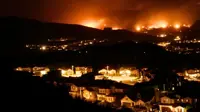Low extinction rate disguises pending Amazon catastrophe
By By Simon Levey | 19 Jul 2012
A discrepancy exists between the number of animal species reported extinct and the reality of population numbers on the ground, which is disguising a catastrophic decline in biodiversity in the Amazon rainforest, according to new research published in the journal Science.
No animal species have been confirmed extinct in the Brazilian Amazon during the last 40 years, despite high rates of deforestation in the region, but the authors of the new study say this masks the critical condition of many species, many of whom don't have enough remaining habitat to survive long term.
The scientists from Imperial College London say the difference between the number of species that models predict should be extinct and the number in reality, a figure termed extinction debt, is set to increase in line with global extinctions to the year 2050 and beyond if deforestation continues at present levels.
They developed a new model that assessed the link between historical patterns of deforestation to extinction rates in the future, and compared their model outputs to data on global populations of endangered animals and with data collected at a local level in the rainforest. The results showed that while many species were not considered to be extinct at a global level, they had completely disappeared from many individual regions, creating gaps in local biodiversity.
Previous predictions suggest that between four and 10 animal species should have gone extinct from the whole Brazilian Amazon, but none have yet been confirmed. In this study, the scientists examined data from the region and found that if deforestation continues as per the current situation over the next forty years, it would cause around ten extinctions per 2500 kilometre square area, with an additional extinction debt of nearly 27 species.
The scientists further predicted that if the Brazilian government introduces severe measures to manage deforestation now, some of these species can recover from near-extinction and drastically reduce extinction debt in many areas.



.webp)
.webp)

.webp)
.webp)

























